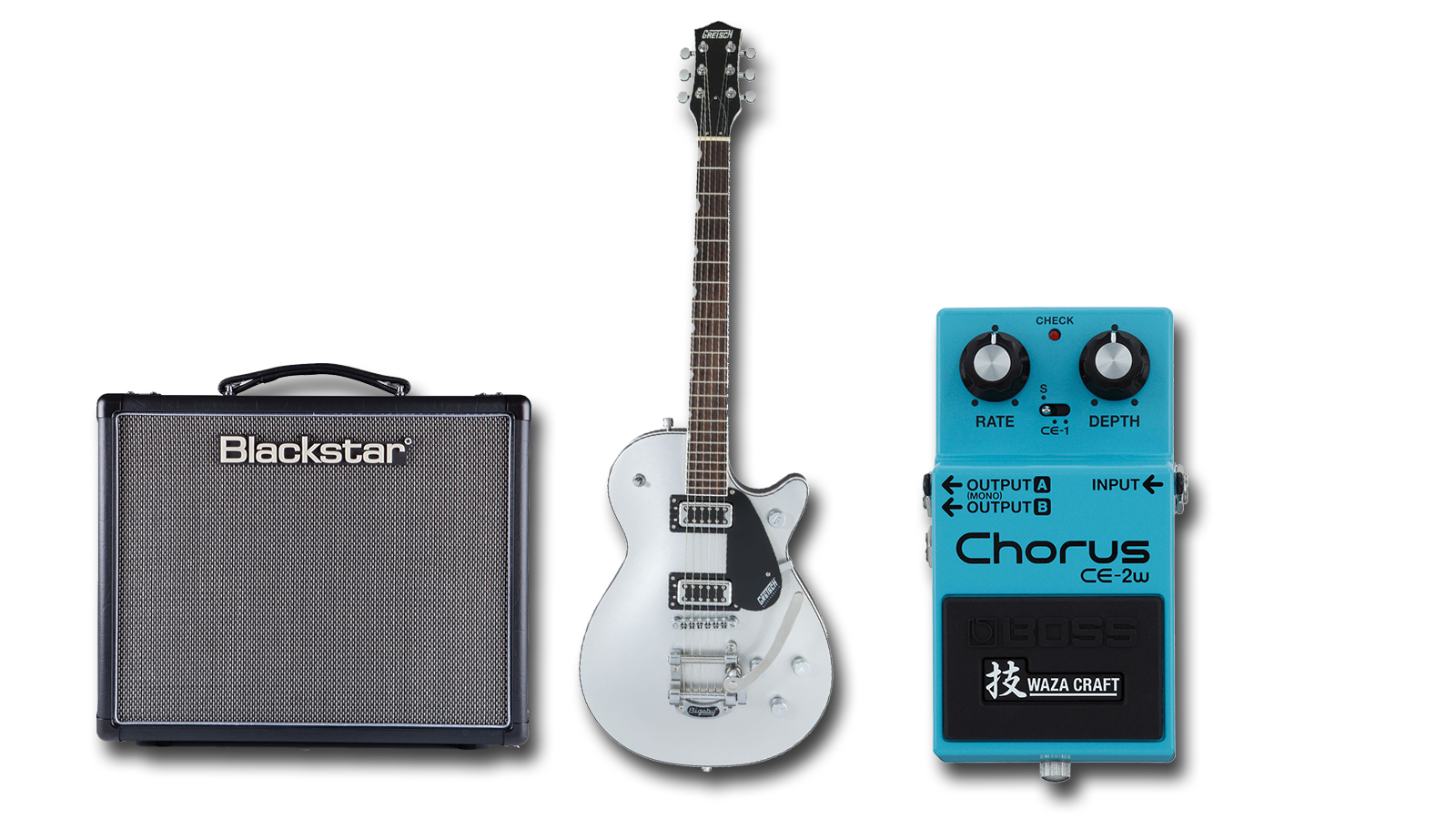The secrets behind Chris Cornell's tone on Soundgarden's Black Hole Sun
Learn the inner workings of one of the great rock songs of the late 20th century

Soundgarden lead guitarist Kim Thayil once called Black Hole Sun the band’s Dream On, but this brooding, psychedelic rocker is no ordinary power ballad. Composed by the band’s frontman, Chris Cornell, the song uses 11 of the 12 notes in the chromatic scale in a highly effective manner that makes perfect melodic sense without any dissonance.
Contrasting guitar textures - upper-register arpeggios with warbling rotating speaker vibrato on the verses and heavy, overdriven lines and power chords on the choruses - reinforce the composition’s drama and tension without relying on the obvious “soft/loud” approach often overused by Soundgarden’s grunge counterparts.
One lesser-known detail of Soundgarden’s Superunknown album is that Cornell recorded almost all of the rhythm guitar parts himself while Thayil’s role was exclusively devoted to playing lead. According to producer Michael Beinhorn, Cornell used only three guitars: a Gretsch Duo Jet, a double-cutaway Gretsch Silver Jet and a Fender Jazzmaster, with the Duo Jet being his sole instrument for Black Hole Sun.
Most of Cornell’s guitar tracks were recorded using a Marshall JMP 50 half stack and Mesa-Boogie Dual Rectifier Solo half stack blended together. On Black Hole Sun, the Marshall provided brighter tone with defined string attack, while the Mesa delivered darker tone with bigger body and bottom-end girth, and both amps were set to moderate levels of overdrive.
The song’s most distinguishing tonal characteristic is the warbling vibrato on the verse’s guitar part, which was created using a Leslie Model 16 rotating speaker cabinet driven by the Marshall head. The rotating speaker effect gives what would otherwise be a sparse- and small-sounding part plenty of texture and body to fill the sonic space and engage the ear, and it enhances the trippy mood of Cornell’s cryptic lyrics.
GET THE SOUND, CHEAP!

● Gretsch G5230T Electromatic Jet
● Blackstar HT-5R MkII
● Boss CE-2W
TONE TIP: Use the CE-2W’s vibrato setting (far right) with the Rate and Depth controls each set to 7-8 to duplicate the Leslie’s distinctive warble.
Get The Pick Newsletter
All the latest guitar news, interviews, lessons, reviews, deals and more, direct to your inbox!
ORIGINAL GEAR
GUITAR: 1989 Gretsch G6128T Duo Jet with ceramic-magnet Filter’tron humbuckers (bridge pickup), master volume: 10, bridge volume: 10, master tone: 10
AMP: Late-Seventies Marshall Model 1987 JMP 50-watt Lead head (Presence: 4, Bass: 5, Middle: 8, Treble: 6, Volume I: 7, Volume II: 5, Input I top left, jumper from Input I bottom left to Input II top right) with Marshall Model 1960 4x12 angled cabinet with G12H 30-watt Greenbacks; 1993 Mesa-Boogie Dual Rectifier Solo head (Orange/Vintage channel, 6L6 tubes, Master: 7, Presence: 2, Bass: 6, Mid: 6, Treble: 5, Gain: 5, Orange Gain switch: Variable High Gain, Rectifier switch: Vacuum Tubes, Power switch: Spongy) with Mesa-Boogie 4x12 with Celestion Vintage 30s.
EFFECTS: Leslie Model 16 rotating speaker cabinet (fast setting)
STRINGS/TUNING: Strings/Tuning: Ernie Ball Regular Slinky .010-.046/Dropped D (D, A, D, G, B, E)*
PICK: Dunlop Tortex 1.00mm
Chris is the co-author of Eruption - Conversations with Eddie Van Halen. He is a 40-year music industry veteran who started at Boardwalk Entertainment (Joan Jett, Night Ranger) and Roland US before becoming a guitar journalist in 1991. He has interviewed more than 600 artists, written more than 1,400 product reviews and contributed to Jeff Beck’s Beck 01: Hot Rods and Rock & Roll and Eric Clapton’s Six String Stories.
“I was in a frenzy about it being trapped and burnt up. I knew I'd never be able to replace it”: After being pulled from the wreckage of a car crash, John Sykes ran back to his burning vehicle to save his beloved '76 Les Paul
“His songs are timeless, you can’t tell if they were written in the 1400s or now”: Michael Hurley, guitarist and singer/songwriter known as the ‘Godfather of freak folk,’ dies at 83












